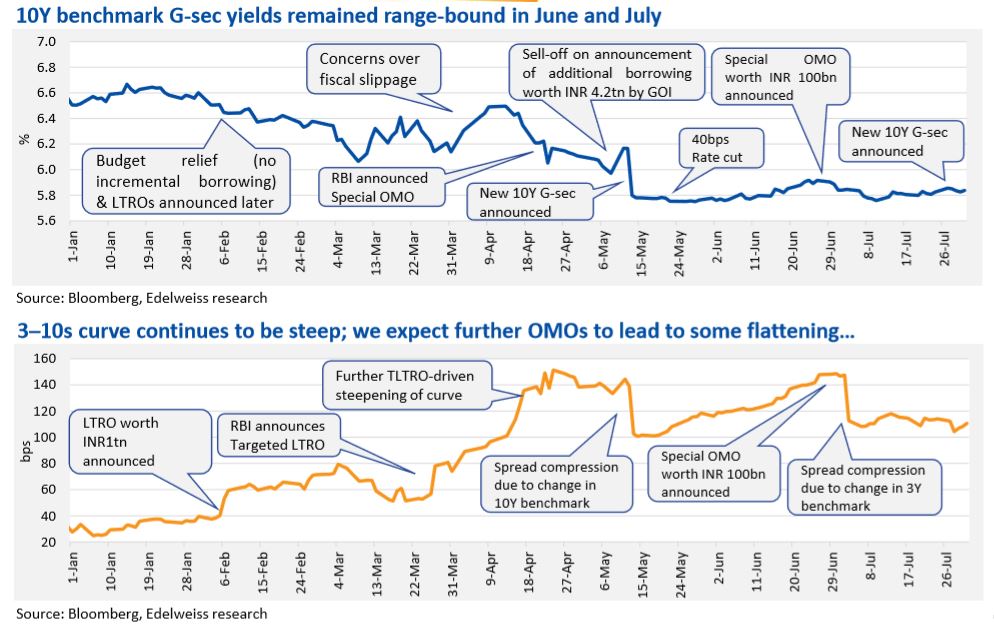Analysis: Japan's Rising Bond Yields And Their Economic Consequences

Table of Contents
The Bank of Japan's Shift in Monetary Policy
The Bank of Japan's (BOJ) recent adjustments to its yield curve control (YCC) policy are at the heart of the rising Japanese government bonds (JGBs) yields. For years, the BOJ maintained an ultra-loose monetary policy, employing quantitative easing (QE) and YCC to keep interest rates exceptionally low and stimulate the economy. This involved aggressively purchasing JGBs to keep long-term yields near zero. However, this strategy has come under increasing pressure due to persistent, albeit moderate, inflation in Japan.
- Details of the adjustments to YCC: The BOJ has allowed for a wider band of fluctuation around its target for the 10-year JGB yield, effectively loosening its grip on yields. This means that yields are now allowed to rise more freely.
- Impact of the shift on short-term and long-term bond yields: While short-term yields remain low, the allowance for greater fluctuation in the 10-year yield has led to a noticeable increase in long-term bond yields, impacting the entire yield curve.
- Comparison to previous monetary policy decisions: This marks a significant departure from the BOJ's previous unwavering commitment to keeping yields suppressed. The shift reflects a growing recognition of the limitations and potential side effects of prolonged ultra-loose monetary policy.
- Potential for further adjustments in the future: The market is anticipating further adjustments to the BOJ's monetary policy, possibly including outright interest rate hikes in Japan, though the central bank remains cautious given the fragility of the Japanese economy.
The Influence of Global Inflation on Japanese Bond Yields
Rising global inflation, particularly in the US, is another significant factor contributing to the increase in Japan bond yields. The transmission mechanisms are complex but involve several key elements.
- Impact of rising US interest rates on Japanese bond markets: Higher US interest rates make US Treasury bonds more attractive to international investors, including those in Japan. This capital outflow puts upward pressure on Japanese bond yields.
- The effect of imported inflation on Japan's domestic economy: Rising import prices due to global inflation are contributing to inflationary pressures within Japan, forcing the BOJ to reconsider its ultra-loose monetary stance. Imported inflation Japan is a key driver of this change.
- The relationship between the yen's exchange rate and bond yields: A weakening Japanese yen (JPY) further exacerbates the problem. A weaker yen makes imports more expensive, fueling inflation and putting upward pressure on bond yields.
- Assessment of the extent to which global factors are driving the yield increase: While the BOJ's policy shift is a primary driver, the influence of global inflation and the weaker yen cannot be ignored; they're significant contributing factors to the rise in Japan bond yields.
Economic Consequences of Rising Bond Yields in Japan
The rise in Japan bond yields carries significant economic consequences for the country. The implications are multifaceted and potentially far-reaching.
- Increased borrowing costs for the Japanese government: Higher yields translate to increased borrowing costs for the Japanese government, making it more expensive to finance its substantial public debt. This could strain public finances and necessitate fiscal policy adjustments.
- Impact on the sustainability of Japan's high public debt: Japan carries one of the highest levels of public debt among developed nations. Rising borrowing costs could jeopardize the sustainability of this debt, potentially triggering a fiscal crisis.
- Potential effect on business investment and consumer spending: Higher interest rates can dampen business investment and consumer spending, slowing down economic growth. This is a significant concern given Japan's already sluggish economic growth.
- Implications for Japan's economic growth trajectory: The overall effect of rising bond yields on Japan's economic growth trajectory remains uncertain, but the potential for slower growth is a serious concern.
Impact on the Japanese Yen
The rising bond yields significantly impact the Japanese yen's exchange rate. Changes in interest rate differentials between Japan and other major economies influence the flow of capital and, thus, the currency's value.
- Relationship between interest rates and currency values: Higher interest rates in Japan, relative to other countries, would typically attract foreign investment, strengthening the yen. However, the impact is complex and depends on various other factors.
- Potential for yen appreciation or depreciation: The current situation is likely to lead to yen appreciation if the interest rate differentials are positive relative to other countries, however, other factors can negate this.
- Implications for Japanese exports and imports: A stronger yen can make Japanese exports more expensive, hurting the competitiveness of Japanese businesses in the global market, while making imports cheaper. Conversely, a weaker yen would have the opposite impact.
Conclusion
The rise in Japan bond yields is a complex phenomenon driven by a combination of factors, primarily the BOJ's shift away from its ultra-loose monetary policy and the influence of global inflation. This shift has significant implications for the Japanese economy, including increased government borrowing costs, potential strains on public finances, and the possibility of slower economic growth. The impact on the Japanese yen’s exchange rate adds another layer of complexity to the situation. The interplay between domestic monetary policy and global economic forces will continue to shape the future trajectory of Japan bond yields and the country's economic performance. Stay tuned for further analysis on Japan's rising bond yields and their evolving economic consequences.

Featured Posts
-
 Choosing The Best Online Casino Canada A 7 Bit Casino Comparison
May 17, 2025
Choosing The Best Online Casino Canada A 7 Bit Casino Comparison
May 17, 2025 -
 Reynosa En La Olimpiada Nacional La Destacada Participacion De David Del Valle Uribe
May 17, 2025
Reynosa En La Olimpiada Nacional La Destacada Participacion De David Del Valle Uribe
May 17, 2025 -
 Brasilien Emiratische Investitionen In Favelas Ein Ueberblick Ueber Chancen Und Herausforderungen
May 17, 2025
Brasilien Emiratische Investitionen In Favelas Ein Ueberblick Ueber Chancen Und Herausforderungen
May 17, 2025 -
 Finale Barcelone Rune Protiv Alcarasa Ko Ce Pobediti
May 17, 2025
Finale Barcelone Rune Protiv Alcarasa Ko Ce Pobediti
May 17, 2025 -
 Zayavlenie Zhevogo Buduschee Investitsiy Ferrexpo V Ukraine
May 17, 2025
Zayavlenie Zhevogo Buduschee Investitsiy Ferrexpo V Ukraine
May 17, 2025
